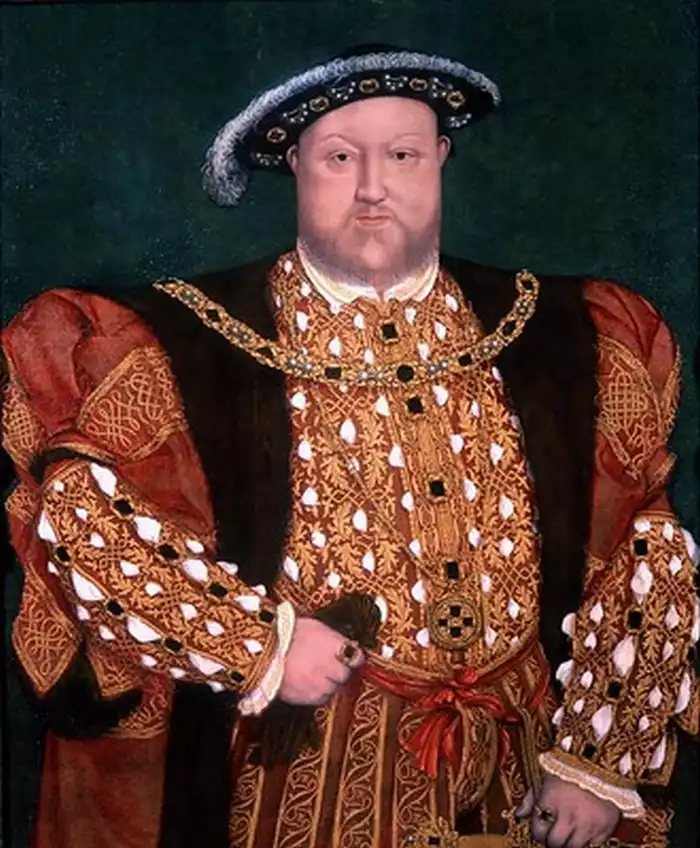
The Break from Rome – The Church of England under Henry VIII
The year 1531 saw England’s King Henry VIII instigate proceedings ultimately culminating in the Church of England’s separation from Roman papal authority. Impetus was lent by Pope Clement VII’s refusal to annul Henry’s marriage to Catherine Aragon, leaving Henry bereft of a male heir.
Discord between English royalty and the papacy, brewing over earlier theological and political disputes, underpinned this schism. However, Henry’s marital predicament brought tensions to a head. Failed efforts to secure papal sanction for annulment led Henry to persuade English clergy and parliament to, in 1534, declare him supreme head of the Church of England. This new standing authorized Henry to self-annul his marriage, eliciting excommunication by an incensed Rome.
Over ensuing decades, Henry oversaw the dismantling of Roman authority in England – closing monasteries, severing Roman ties and adopting some Protestant reforms within the English church. By Henry’s 1547 death, England had essentially rejected papal supremacy, establishing its monarch as highest ecclesiastical authority. This marked definitive departure from the Roman Catholic church, setting England on a Protestant trajectory continued under succeeding rulers.
The Act of Supremacy
The formal establishment of the king’s supremacy came with the Act of Supremacy passed by Parliament in 1534. This declared Henry VIII to be the “Supreme Head on earth of the Church of England.” It required English clergy and officeholders to recognize his supremacy and take an oath affirming this. The Act gave Henry the authority to supervise church doctrine, discipline clergy, and define religious orthodoxy.
This was a revolutionary development, as it transferred powers previously held by the pope to the English monarch. The Act represented a definitive statement of the English church’s independence from Rome. However, Henry still considered it a Catholic institution at this stage and sought to maintain doctrinal continuity even as he broke administrative ties.
Other important legislation buttressed royal control over the church. The Act of Succession in 1534 declared Henry’s marriage to Catherine invalid and recognized Anne Boleyn as his lawful wife. The Treasons Act mandated death for anyone who denied these marital maneuvers. Laws were also passed to facilitate the suppression of monasteries, redirecting their wealth to the crown.
These legal measures allowed Henry to advance his personal desires under the guise of reforming the English church. While he did not immediately instigate major doctrinal changes, Henry’s assertion of supremacy enabled future monarchs to move the church in a more Protestant direction. The Acts of the 1530s thus set in motion England’s break with Rome even if the initial motivations were less theological than political.
The Henrician Reformation
While Henry VIII’s initial moves against Rome were driven by personal concerns, he did preside over reforms that pushed the English church in a Protestant direction during his reign. Under Thomas Cromwell’s guidance as vicegerent, clergy were instructed to emphasize the Bible over church tradition in their teaching. An English language Bible was also made available. Some monasteries were closed, religious shrines destroyed, and the doctrine of purgatory rejected.
These changes reflected the growing influence of evangelical reformers like Hugh Latimer within Henry’s government. However, the king maintained a doctrinal conservatism and persecuted radical Protestants. The Henrician Reformation was primarily designed to consolidate royal control rather than radically transform theology. Henry even pushed back against innovations suggested by Protestant counselors like Cromwell and Archbishop Thomas Cranmer.
By the time of Henry’s death in 1547, the English church had renounced papal authority but remained halfway between Catholicism and Protestantism in its practices and teachings. Yet in breaking with Rome so forcefully over his marital desires, Henry set in motion a chain of events that enabled more radical reform under his successors. The Act of Supremacy provided the legal basis for further changes, while the seeds of evangelical theology took root in England.
References
Dickens, A.G. The English Reformation. Pennsylvania State University Press, 1991.
Elton, G.R. Reform and Reformation: England, 1509-1558. Harvard University Press, 1977.
Henry VIII and the Anglican Church. Study.com, 2022. Accessed January 10, 2024.
Rex, Richard. Henry VIII and the English Reformation. Macmillan Press, 1993.
Royal Museums Greenwich. Why Did Henry VIII Break with Rome? Accessed January 10, 2024.
Scarisbrick, J. J. Henry VIII. Yale University Press, 1997.
Wabuda, Susan. Preaching During the English Reformation. Cambridge University Press, 2002.
